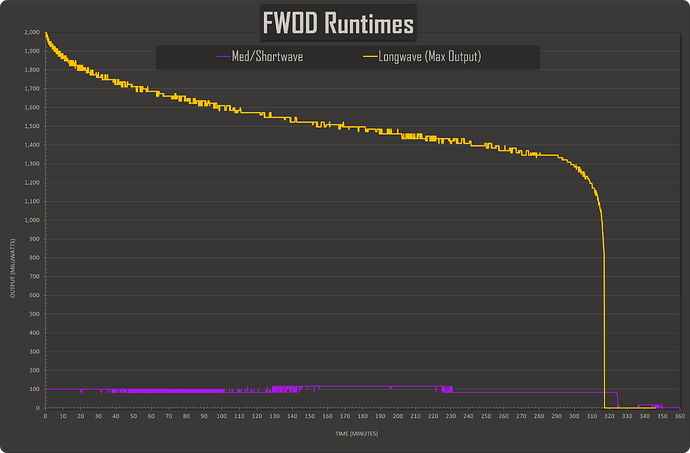Hey guys! I was approached by @RaymondDashWu for a review of a new flashlight he’s released which features longwave, midwave, and shortwave emitters in one host for mineral hunting and identification.
This is the same light from his earlier thread here: Need Feedback on Upcoming Triple wavelength UV Flashlight
The light features three high power ultraviolet emitters:
- 365nm (UVA): Seoul Viosys CUN6GB1A
- 308nm (UVB): Photon Wave Co PKF-50-F35
- 255nm (UVC): Photon Wave Co PKB-S50-F36-H1
A triple-channel driver gives independant control of each channel, with 100mW for the short and midwave channels, and a variable longwave channel that produces up to 2W.
The standout design feature of this light is its triple button interface: The three buttons arrayed on the head correspond to Short, Medium, and Longwave UV from left to right, respectively. A simple press of each button turns the channel on, another turns it off. Pressing and holding the button on the longwave channel will ramp the output, which I did find a bit tricky to dial in because the ramp doesn’t stop at either end before reversing and because, well, it’s UV light, which makes the level hard to gauge.
All three buttons will glow when any are interacted with. While off, each channel will light green, and switch to red when their respective channels are activated. After a few seconds, the lights will turn off to help preserve night vision - which is helpful as they are very bright.
I was able to graph runtimes by bouncing the light off a piece of white paper:
We can see that the Longwave channel slowly falls off over time, hitting about 75% initial output after running for 318 minutes (~1.3W when it dies).
Meanwhile the other two channels run for only about 10 minutes longer, despite the much lower output. Overall the runtimes with the included 32650 are quite solid and I don’t see battery life being a concern while using this light.
However, while my light included a 32650 cell, Raymond says that he couldn’t find a 32mm cell that he was satisfied with, so instead decided to include a 21700 with the version currently for sale. Included are 3D-printed adapter tubes for 32650 > 21700 > 18650 cells.
On the rear is a USB C port with a rubber cover. While charging, the three buttons light up to indicate charge level (which is quite cool).
The light features a dichroic lens for filtration, which is pricier than a ZWB2 filter but allows for even higher levels of UV transmission.
255nm: 78.29%
308nm: 96.37%
365nm: 92.88%
Numbers from this graph provided by Raymond: FWOD Transmission | Flourish
Because this is a high-power UV light, and especially because it produces UVC light, safety is very important when operating the FWOD. Please use eye protection when using this light, and avoid shining it at bare skin or living creatures. Standard safety glasses are sufficient as polycarbonate blocks almost all UV light (99% across all wavelengths).
You may be wondering what a light like this is for. The FWOD was purpose built for rockhounds, who can find a lot of value for UV lights as certain minerals will flouresce under specific wavelengths. I haven’t seen a light like this before, I’ve only seen and used single-wavelength lights so having something with all three can be very valuable for identifying specific minerals that only glow under, for example, 255 nm light but not 365nm, which is much more common in flashlights.
I hope this is well-illustrated in the above video, I will also provide images once I figure out how to get them to upload properly (BLF doesn’t like my images apparently).
I truly am not knowledgeable on flourescent minerals, but have long been interested in geology and rockhounding (just another hobby that I don’t have the time to fully pursue lol). This is a tool that I genuinely had a lot of fun using, and I am excited at the idea of using it to hunt for a variety of interesting samples… should I ever get the chance.
In the meantime, it’s a light that I am happy to recommend to anyone who would find the wavelengths useful, which is definitely a very niche group of people. For those people, I think the $375 is well justified when considering the emitters, filter, driver, and unique design.
The light can be purchased here: [IN STOCK] Fullwave OD (FWOD) — Raymond Wu

